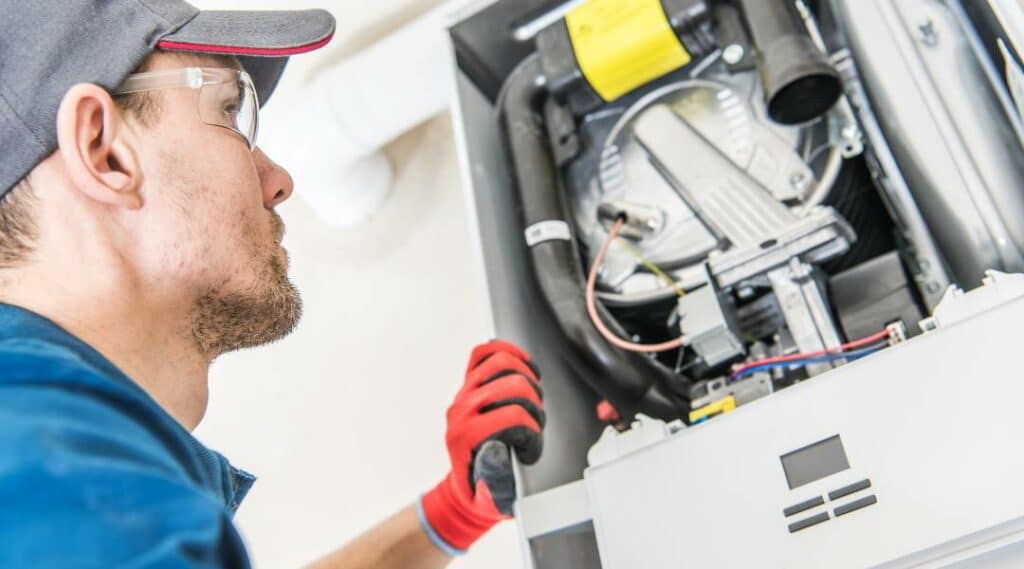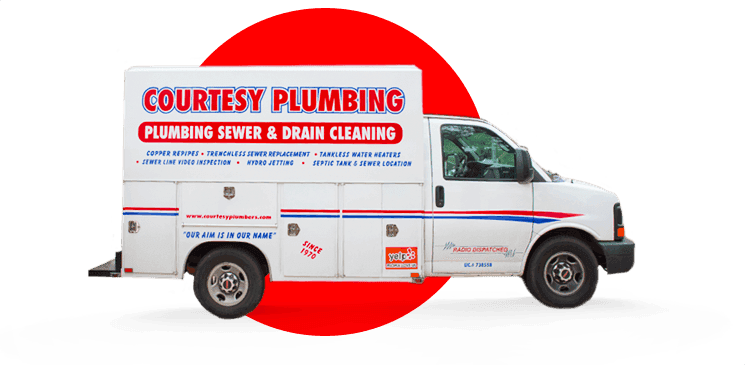Got hot water woes? Figuring out and fixing your water heater issues and knowing when to call for replacement service can seem daunting. A no-hot-water situation has various causes.
For electric units, it could be a power cut or a failed heating element not warming the tank’s contents. Gas models might suffer from bad connections or faulty burners, which prevent heat production. Checking the breaker for electrical types may solve some problems by resetting the circuit if tripped unexpectedly; otherwise, you’re looking at possible component failures needing expert attention for repair or replacement tasks.
Identifying Common Water Heater Issues
When you don’t have hot water at home, check your electric heater’s breaker. It might have tripped. Reset it to fix the problem.
If that doesn’t work, the issue may lie with its heating element needing professional attention. For gas heaters not warming up water, see if the pilot light is still on or if pipes are frozen in cold weather—thaw them as needed. Should these steps fail and your pilot light stay lit without heating issues from freezing lines, call for expert help.
On another note, should your hot water smell bad? This usually points to bacterbuild-updup inside the tank due to stagnant warm conditions over time—a cue for flushing out your system yearly to avoid such problems before they start. To properly flush: turn off the power (electric) or set “Pilot” mode (gas), close the incoming cold-water valve, then wait — this simple act maintains well water heater replacement service.
Exploring DIY Repair Solutions
When fixing your hot water woes, a key point is to think about the type of heater. Some opt for electric ones but often land on gas tankless models due to their efficiency and cost. Installing it outside can save space but might lead to an unexpected chill in your shower—that first blast of cold water before the heat kicks in.
To tackle this, creating a system with a buffer reservoir seemed like a smart move at first. It’s meant to mix hot and cold waters, reducing wait times for warmth. However, real home use uncovers flaws in theory-based plans.
The setup worked somewhat—cutting down initial cold spells yet letting temperatures fluctuate unpleasantly mid-shower reveals its inadequacy, especially if placed too close or small compared to needs. Solutions seem varied—enlarging distances or tanks could help balance out showers’ temperature swings better than simpler fixes. Remembering these steps when diving into DIY repairs on your water heating puzzles can guide you towards more satisfying outcomes without unnecessary shivers during those supposed-to-be cozy moments under the warm stream.
Maximizing Efficiency with New Installations
Think about a tankless unit to boost your water heater’s work and cut energy use. These heaters warm water on the spot, avoiding wasted energy. Perfect for places like Denver with lots of sun, solar options tap into this free power to heat your bath or sink water.
If you’re in milder spots, hybrid types that mix tanks and heat pumps save more power than old models. Always clear out sediment from your device by flushing it regularly; it keeps things running smoothly. Also, setting the right temperature—around 120 degrees- is good to avoid burns and lower bills.
Adding covers to pipes helps keep the warmth as water moves through them. Look at leaks quick so they don’t get worse or wreck parts of your home. For those long-lasting heaters, check their anode rods since these stop rust inside.
Think over getting newer equipment if yours eats up too much juice; the latest versions are designed smarter for less waste. Cut down on how much hot stuff you need by fitting special showerheads and taps that let out less but still do the job well enough. Softening hard city blasts can prevent build-ups that slow down efficiency while knowing how to halt flow fast in emergencies avoids major messes.
Taking care of all these steps means reliable clean baths when needed without wasting what we’ve got or spending more coins than we should have to!



